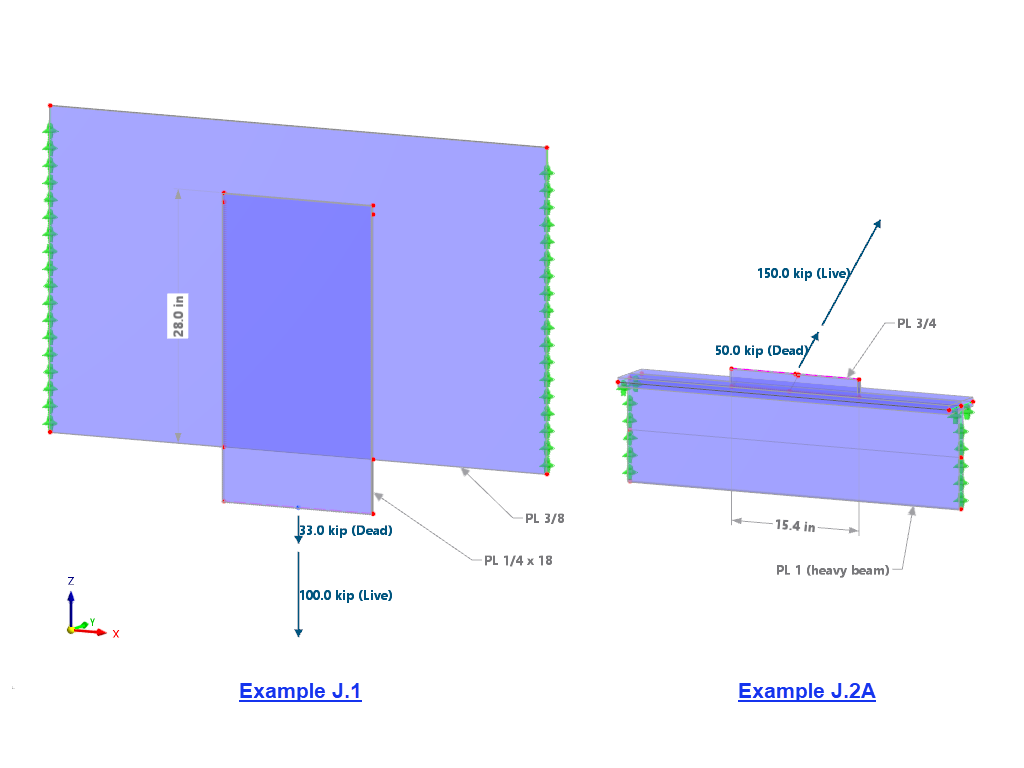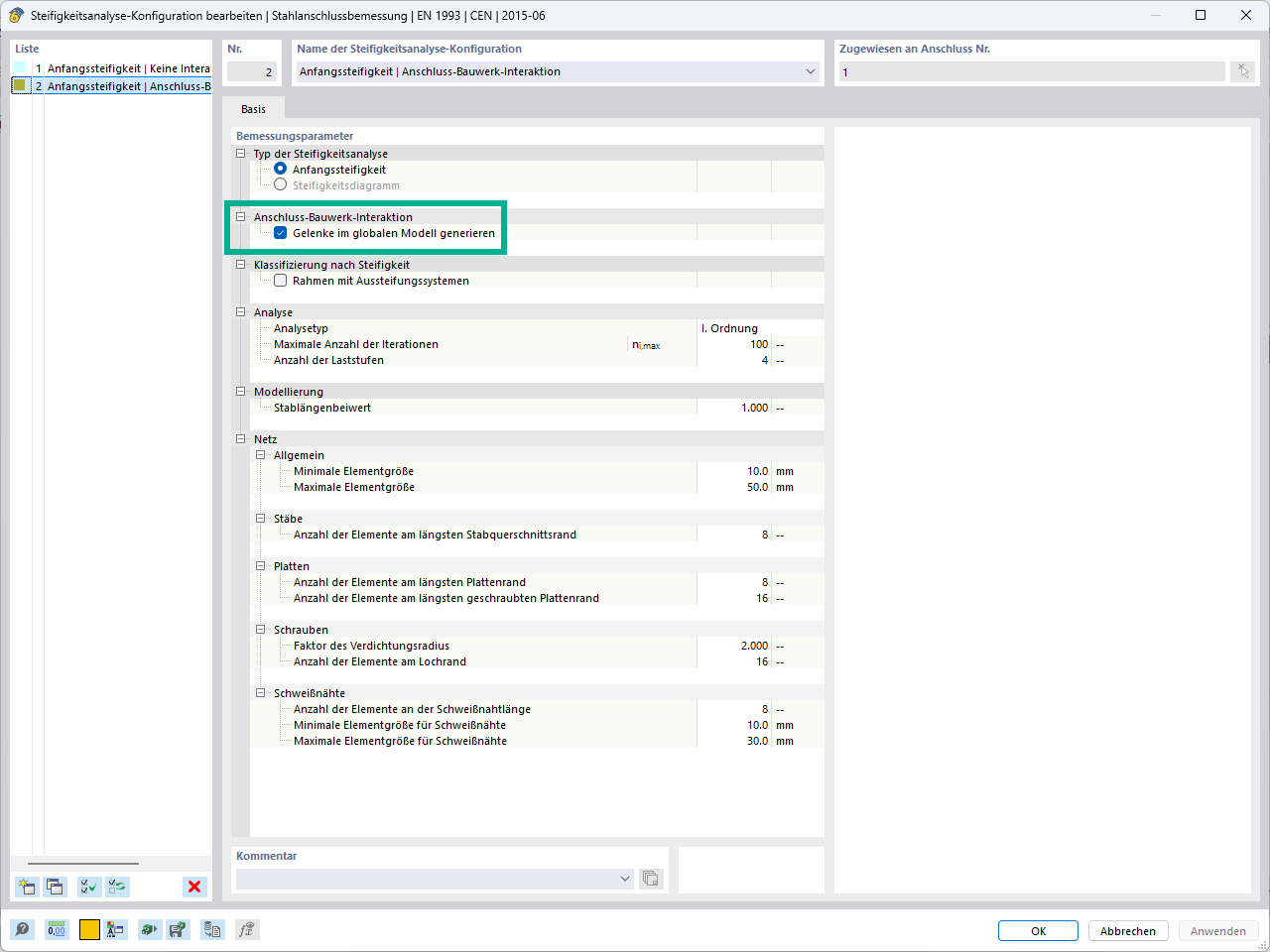Carica l'applicazione in RFEM 6
In general, load application in RFEM 6 is facilitated by load wizards. These tools assist the generation of snow loads, wind loads, and member loads from area or free line load by defining the load parameters and the assigned load case. As shown in Image 1, the load plane must be defined as well.
RFEM 6 provides another approach for simple load application by creating a surface with load transfer as the stiffness type. As presented in Image 2, a new surface is created with no thickness and a unique function to transfer loads.
This surface has no structural effect, and it can be used to consider loads from surfaces that have not been modeled (for example, facade structures, glass surfaces, trapezoidal roof sections, and so on).
In contrast to the load wizards where the load area must be defined each time a new load is being introduced, a load transfer surface can be used multiple times for various load applications. To be more specific, this approach allows different surface loads to be assigned by using a single load transfer surface.
Practical Example of Load Transfer Surface Application
The use of a load transfer surface is presented on a steel hall where 0.10 kN/m² of cladding must be considered in addition to the structural elements. For this purpose, separate load transfer surfaces are defined for the roof and the facade, one for each side. This is done as shown in image 3; that is, by creating a new load transfer surface for each loading area. Image 4 demonstrates how the load is applied to these surfaces.
Load Transfer Direction
The cladding is displayed as new surface loads, as shown in Image 5. The load transfer depends on the load transfer direction, and it can be displayed separately on each member, as shown in Image 6.
Application of Snow and Wind Loads via Load Transfer Surfaces
As stated, the advantage of applying loads via the load transfer surfaces is the ability to apply loads using the same surface in other load cases. To demonstrate this, the same load transfer surfaces will be used to apply snow and wind.
As shown in Images 7 and 8, the load can be assigned in a similar yet more straightforward manner, since the load transfer surfaces are already available and there is no need to define them again.
Closing Remarks
Finally, it may be concluded that load transfer surfaces are an advantageous feature in RFEM 6 that allows consideration of loads from surfaces that have not been modeled. Their efficiency is related to the fact that the same load transfer surface can be used for the application of various loads without the need to redefine the surface.




















.png?mw=350&hash=d48786243b6e6ea52c46161d98f18495d06c047f)




































_1.jpg?mw=350&hash=ab2086621f4e50c8c8fb8f3c211a22bc246e0552)



